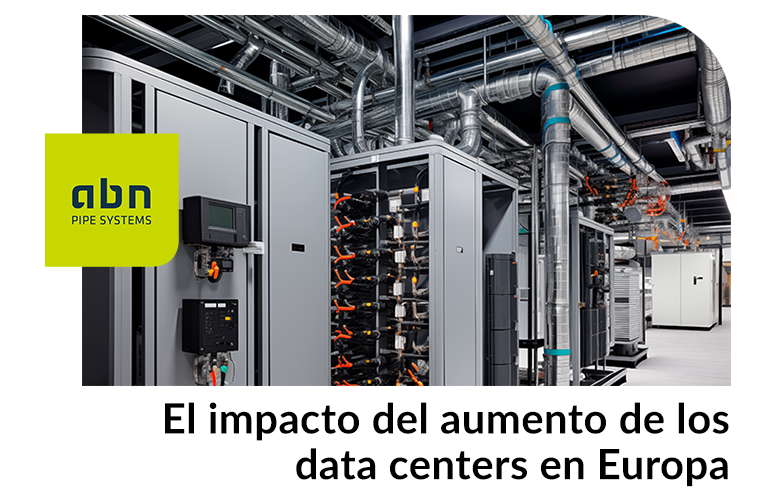La gran demanda de servicios en la nube y el movimiento continuo de una gran cantidad de datos hace que todo el volumen de información tenga que alojarse en centros especializados, más conocidos como los data centers.
Europa, en particular, está experimentando un gran auge en la construcción y expansión de estos nodos tecnológicos. Según datos de Savills, el continente necesitará alcanzar 20.750 MW de capacidad en data centers en 2025 para poder satisfacer el aumento de la demanda.
En este contexto, España se proyecta como el lugar idóneo para los data centers europeos gracias a su ubicación privilegiada y a su cercanía a los puntos de conexión con el cableado marítimo. Por ese motivo, es muy importante que se realice un mantenimiento adecuado de estas infraestructuras, para asegurar que nuestros centros sigan siendo motores de innovación y progreso en el futuro.
Los data centers como motor de la tecnología
Los data centers son el corazón de cualquier sistema digital. En su interior, se almacenan, procesan y distribuyen enormes cantidades de datos que abarcan desde la información de las empresas hasta las fotos y videos que se comparten constantemente en línea. Gracias a estos centros, se puede acceder a correos electrónicos, navegar por internet y realizar compras online.
Sin embargo, sus grandes capacidades y su eficiencia no son coincidencia. Los data centers están compuestos por una serie de sistemas complejos, cada uno de los cuales está diseñado y operado con una gran precisión. Desde el diseño de los equipos hasta los sistemas y programas de gestión de datos, todo debe estar en sintonía para garantizar un rendimiento óptimo y una disponibilidad ininterrumpida.
La importancia de las infraestructuras
Con el incremento de este tipo de centros de información, ha crecido el número de edificios que los alojan. Debido a la disposición de los equipos y a las exigencias de funcionamiento prolongado, las instalaciones de estas infraestructuras requieren estabilidad y fiabilidad y, de manera específica:
- La instalación de suministro del agua requiere un funcionamiento absolutamente fiable, garantizando su estanqueidad.
- El sistema informático necesita un funcionamiento continuo a largo plazo por lo que las instalaciones de aire acondicionado requieren una gran estabilidad.
- La temperatura y la humedad en el entorno del sistema informático deben ser constantes y deben poderse controlar con precisión.
- Con el aumento de los requisitos de funcionamiento y mantenimiento, las instalaciones de aire acondicionado requieren de un soporte técnico inmediato.
El papel de las tuberías preaisladas
Es importante tener en cuenta que en los data centers cualquier tipo de daño por fugas es crítico, ya que alguno de los equipos llega a entrar en contacto con el agua se podría desencadenar un cortocircuito y la desconexión de los sistemas operativos, convirtiendo la avería en un problema incuantificable. Por ello, un elemento crítico son las tuberías.
Para este tipo de instalaciones, en las que la red de aguas desempeña un papel vital, las tuberías que mejor se adaptan son las preaisladas.
Las tuberías preaisladas son aquellas que están compuestas por un tubo interior, el aislamiento y un tubo camisa o exterior, por lo que no es necesario añadir un aislante térmico de forma externa. Estas tuberías están diseñadas para prevenir posibles fugas o roturas y como consecuencia de ello, las posibles pérdidas de energía. Por lo tanto, su utilización aporta múltiples beneficios.
En estas construcciones, las tuberías son las encargadas del mantenimiento de una temperatura óptima. Los sistemas de servidores y equipos informáticos generan una gran cantidad de calor, por lo que mantener la temperatura dentro de los límites seguros es esencial para evitar fallos y pérdidas de datos.
Además, la elección de las tuberías preaisladas adecuadas también tiene un impacto significativo en la eficiencia energética de los data center. El aislamiento adecuado reduce las pérdidas de calor, lo que significa que se necesita menos energía para mantener la temperatura ideal. Esto no solo reduce los costes operativos, sino que también contribuye a la sostenibilidad de los data center a largo plazo.
Instalando tuberías de alta calidad y preaisladas, los operadores de data centers están invirtiendo en durabilidad, eficiencia y sostenibilidad en sus instalaciones; ya que estos sistemas no solo optimizan el rendimiento actual, sino que también preparan el terreno para el crecimiento futuro y la evolución de la tecnología.
